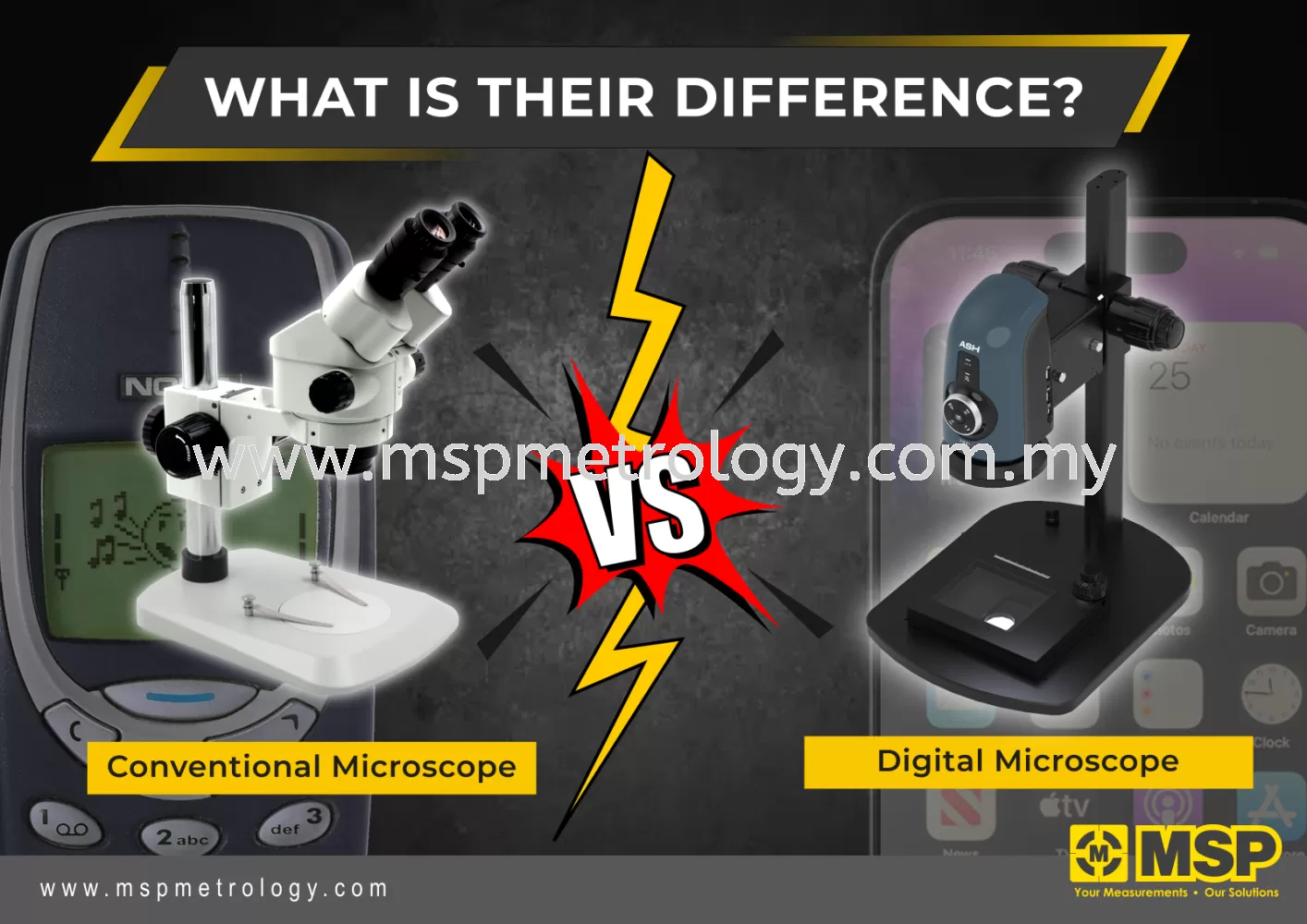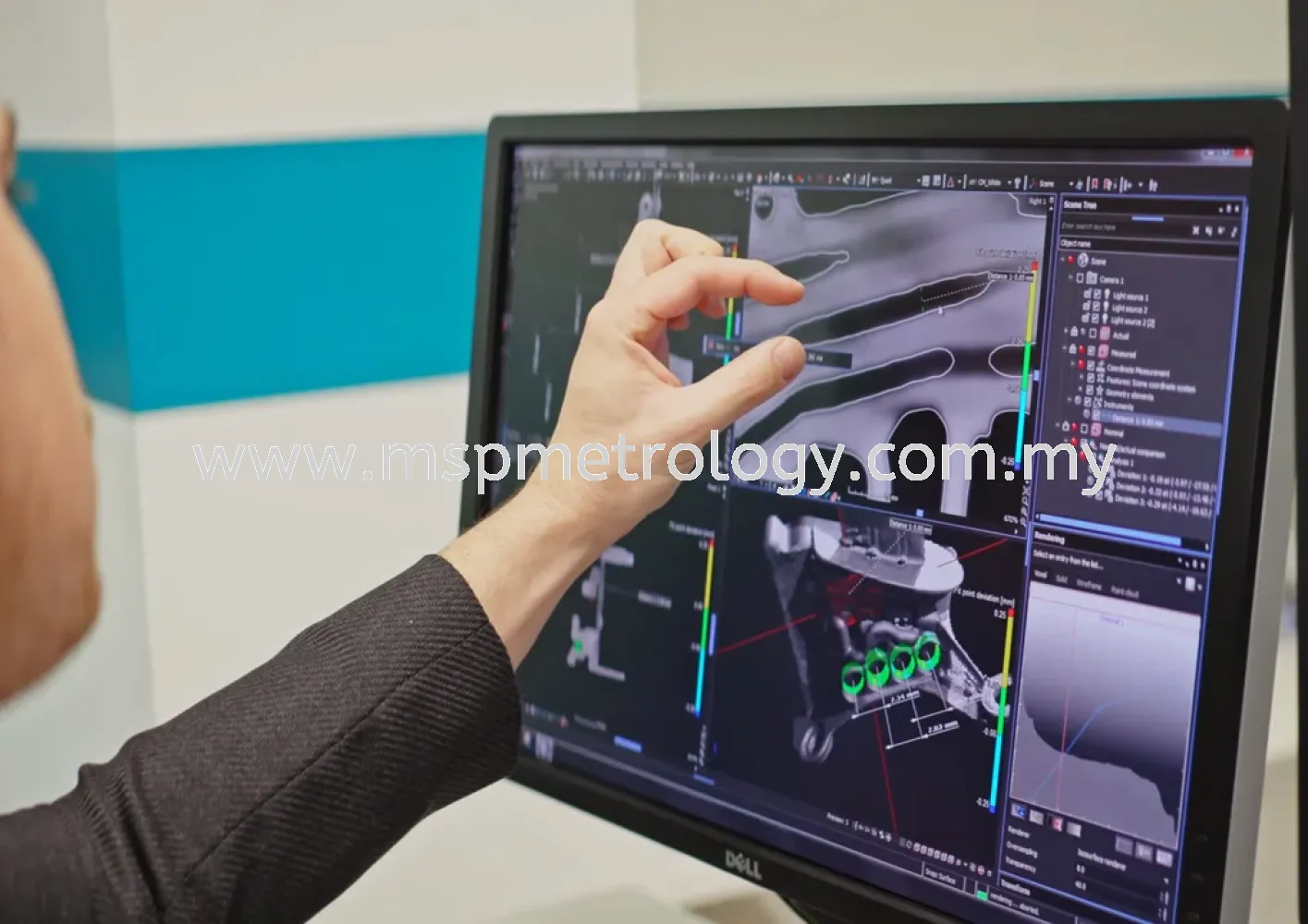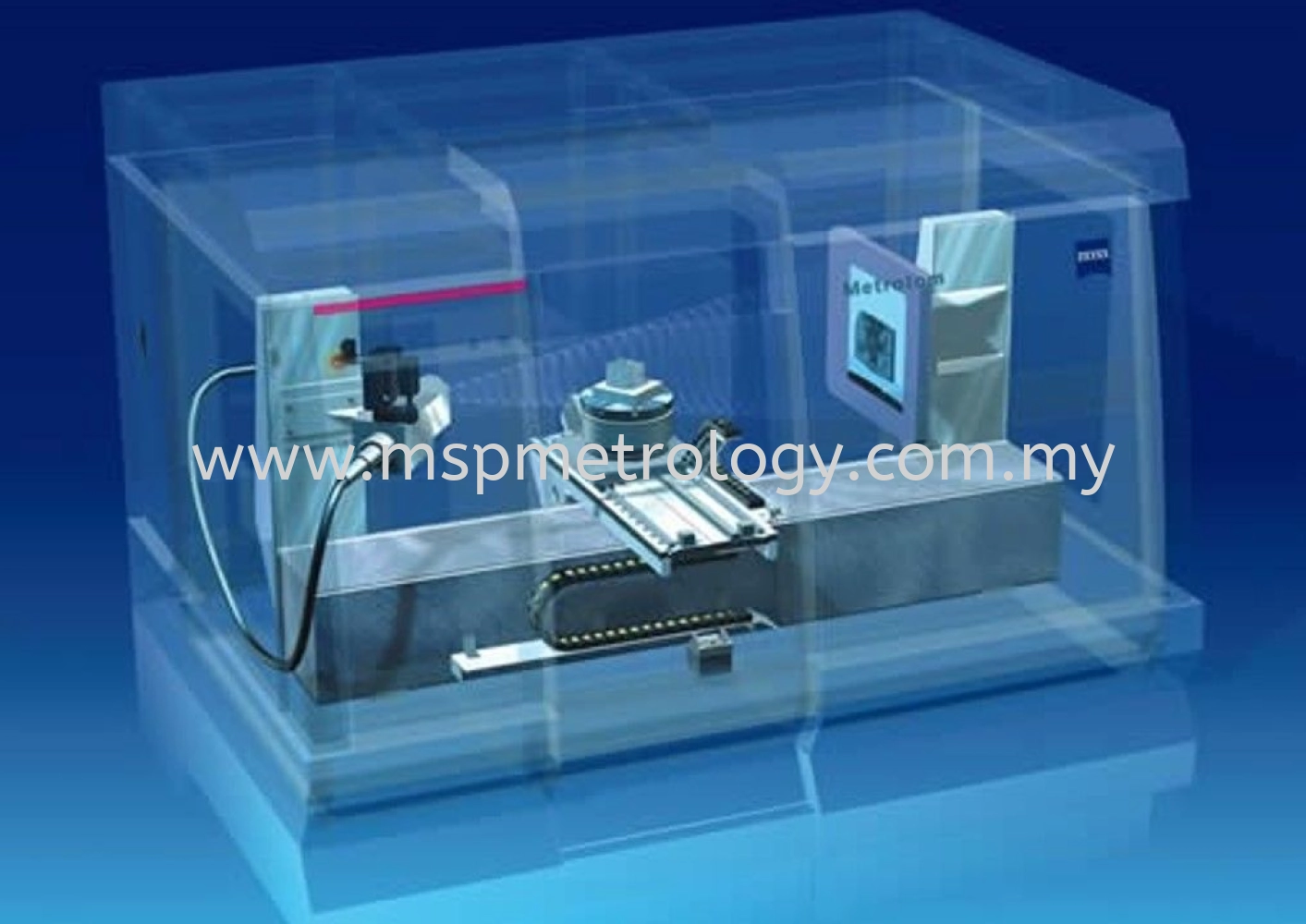Understanding the Differences Between Conventional Stereo Microscopes and Digital Microscopes.
Microscopes have been an indispensable tool in scientific research, education, and various industries for centuries. They allow us to peer into the microscopic world, revealing intricate details that are otherwise invisible to the naked eye. Two popular types of microscopes are conventional stereo microscopes and digital microscopes with monitors. While they share the common goal of magnifying objects, they differ significantly in their technology, applications, and advantages.

In this article, we will delve into the distinctions between these two types of microscopes in term of Field-of-View (FOV), focal distance, and magnification which are essential parameters in both digital microscopes and conventional microscopes. They can differ due to the different optical systems and technology used in each type of microscope. Let’s compare these parameters in digital microscopes and conventional microscopes:
1. Field of View (FOV):
Digital Microscope: The FOV in a digital microscope is determined by the camera sensor and the size of the monitor or screen on which the images are displayed. It is often measured in millimeters or micrometers and depends on the size of the sensor and the optics of the camera. The FOV can vary depending on the camera’s specifications, but it’s typically smaller at higher magnifications. The Vitiny UM08-CSZ1236 is one of the examples of digital microscope that can reach wider field-of-view, up to 36mm
 .
.
Our Vitiny UM08-CSZ1236 which has wide FOV, up to 142mm
Conventional Microscope: In an optical microscope, the FOV is primarily determined by the objective lens being used. The eyepiece may also affect the FOV to some extent. FOV in optical microscopes can vary widely depending on the objective lens, but it’s generally larger at lower magnifications and becomes smaller as you increase magnification.
2. Focal Distance (Working Distance):
Digital Microscope: The focal distance in a digital microscope depends on the design of the microscope. Some digital microscopes have a fixed focal distance, while others may offer adjustable working distances. The focal distance is crucial for tasks that require space for manipulation or additional tools.
Example of Working Distance as refer with our Ash Omni 3 Digital Microscope
Conventional Microscope: The focal distance in an optical microscope varies with different objective lenses. Higher magnification objectives typically have shorter working distances, while lower magnification objectives offer longer working distances. Users can switch objectives to adapt to their specific needs.
3. Magnification:
Digital Microscope: Digital microscopes offer a range of magnification options, which can vary between models. The magnification is achieved through the combination of the optics in the objective lens and digital zoom capabilities of the camera. Digital microscopes can often provide higher digital zoom levels, allowing for very high effective magnifications. Our new launch, Motic EasyZoom series provides up to 5800X of magnification.

Conventional Microscope: Conventional microscopes use a combination of objective lenses and eyepieces to achieve magnification. Users can switch between different objective lenses to change the magnification level. The maximum magnification in optical microscopes is often limited by the available objective lenses.
Other Differences of Conventional Microscope and Digital Microscope
1. Ergonomical Position:
Digital Microscope: Digital microscopes often offer a more ergonomic position for users. Instead of looking through eyepieces, users view the specimen on a monitor or screen at eye level. This eliminates the need to bend over and allows users to maintain a more comfortable and natural posture. Some digital microscopes also have adjustable stands or articulating arms, which further enhance ergonomics by enabling users to position the screen at the most comfortable height and angle.
Conventional Microscope: When using a conventional optical microscope, users typically have to bend over the eyepieces to observe the specimen. This posture can lead to discomfort and strain, especially during extended periods of use. The eyepieces need to be adjusted to accommodate each user’s eye spacing (interpupillary distance). The need to maintain a consistent head position and eye alignment can be physically demanding.

Image comparison between people using conventional microscope and digital microscope
2. Group Discussion/Supervising:
Digital Microscope: Digital microscopes are well-suited for group discussions and supervising. Since the specimen is displayed on a monitor, multiple people can simultaneously view the same image. This makes it easy to collaborate, discuss findings, and provide guidance to others without the need for physical adjustments or taking turns at eyepieces. Some digital microscopes even have the capability to capture and share images or videos in real-time, enhancing collaborative learning and supervision.

Multiple people viewing using digital microscope; easier for discussion and observation
Conventional Microscope: Group discussions and supervising others using a conventional microscope can be challenging. Typically, only one person can view the specimen at a time through the eyepieces. Sharing the observations with a group requires physically moving aside to allow others to take a turn. Supervising others can be cumbersome, as the supervisor cannot directly see what the user is observing without taking over the eyepieces.
3. Documentation/Data Recording:
Digital Microscope: Digital microscopes are more advanced. They have built-in cameras that automatically take digital pictures and videos of what you’re looking at. This makes it easy to record your observations consistently and with good quality. You can also add labels, measurements, and descriptions directly to the digital pictures using special software. Plus, you can instantly show what you’re seeing on a screen or share it electronically with others, making collaboration and learning from a distance easier. Digital microscopes can store your data on the microscope itself or on external devices like computers or USB drives. This means your recorded data is well-organized and accessible whenever you need it. Some digital microscopes even have tools for analyzing and measuring the images, making research tasks more efficient.

Ash Digital Microscope able to directly record data and image for faster documentation process
Conventional Microscope: With a regular microscope, you have to do things manually. This means you need to write down your observations, draw pictures, or use a separate camera to take pictures through the microscope. You can only record what you physically do, which takes time and the quality can vary between users. Sharing your findings often means passing around physical notes, drawings, or images, which can be a hassle and may lead to mistakes.
Conclusion
Conventional microscopes and digital microscopes have their merits and are indispensable tools in various fields. Your selection should align with your specific needs and preferences, as well as the nature of your work. The advancement of technology has provided us with an array of options, ensuring that researchers and professionals can make informed choices to explore and understand the microscopic world more comprehensively than ever before. Understanding the differences between conventional and digital microscopes is vital for making the right decision and maximizing the potential of microscopy in your endeavours.
If you have any enquiry with stereo microscope or digital microscope, welcome to contact us by email: enquiry@mspmetrology.com
29 Sep 2023


















.png)
